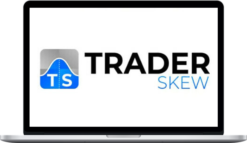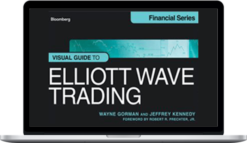Engidawork Gebeyehu Demissie – SPAX Trading MENTORSHIP
$65.00 $45.00
Delivery: Within 7 days
Description
Engidawork Gebeyehu Demissie – SPAX Trading MENTORSHIP
Unlock the secrets of successful securities trading with expert guidance, acquire advanced strategies, and gain the confidence to navigate the SPAX market like a pro.
What You’ll Learn In SPAX Trading MENTORSHIP
WElcome to SPAX ACademy
- Welcome Message
CHAPTER 1: Introduction to Forex Trading
- 1.1. Historical Background of Forex Trading
- 1.2. Forex Market Participants
- 1.3. Currency Pair
- 1.4. Pip and Pipet
- 1.5. Lot Size
- 1.6. Brokers
- 1.7. Leverage
- 1.8. Platforms
- 1.9. How We Make Money on Trading
CHAPTER 2: Market Structure
- 2.1. Technical Analysis – Market Structure
- 2.2. What is Uptrending Market?
- 2.3. How Uptrending Market
- 2.4. How Uptrending Market Ends
- 2.5. How to Trade Uptrending Market
- 2.6. What is Down Trending Market?
- 2.7. How Down Trending Market
- 2.8. How to Trade Down Trending Market
- 2.9. What is Ranging Market?
- 2.10. How Ranging Market Ends
- 2.11. How to Trade Ranging Market
- 2.12. What is Choppy Market?
CHAPTER 3: Support and Resistance
- 3.1 Introduction to Support and Resistance
- 3.2 What is Support?
- 3.3. Identify and Mark Support Areas on Chart
- 3.4 What is Resistance?
- 3.5. Support Level Trading Concept: When Support Holds
- 3.6. Support Break and Test Examples
- 3.7. Resistance trading concept – when Resistance holds
- 3.8. When Resistance Holds – EXAMPLES
- 3.9. Resistance Trading Concept – When Resistance BREAK
- 3.10. When Resistance BREAKS EXAMPLES
- 3.11. Support and Resistance Trading Concept SUMMARY
CHAPTER 4: Supply and Demand
- 4.1. Supply and Demand Areas
- 4.2. Identifying Supply and Demand
- 4.3. Supply and Demand with Base
- 4.4. Supply and Demand with No Base
- 4.5. Candle Body too Big
- 4.6. Candle have Long Tail
- 4.7. How to Trade Supply and Demand Areas
CHAPTER 5: Candlesticks Patterns
- 5.1. What is Candlesticks Patterns?
- 5.2. Marubozu Candlestick
- 5.3. Doji Candlestick
- 5.4. Single Candlestick Patterns – High Test and Low Test Candlestick
- 5.5. Body to Wick Relation
- 5.6. Bullish and Bearish Engulfing
- 5.7. Tweezer Candlestick
- 5.8. Morning Star and Evening Star Candlestick Pattern
CHAPTER 6: Price Action Pattern
- 6.1. Triangles and Wedges
- 6.2. How to Trade Triangle and Wedge EXAMPLE
- 6.3. Flags
- 6.4. Flag EXAMPLES
- 6.5.Head and Shoulder
- 6.6. How to Trade Head and Shoulder on Resistance
- 6.7. Inverted Head and Shoulder
- 6.8. Double Top
- 6.9. Double Bottom
- 6.10. Cup and Handle
CHAPTER 7: Top-down Analysis
- 7.1. What is Top Down Analysis?
- 7.2. Why You Need to Use It?
- 7.3. How We Do Top Down Analysis – All Three Same Direction
- 7.4. How We Do Top Down Analysis – Last Two on The Same Direction
- 7.5. How We Do Top Down Analysis – First and Last Same Direction
- 7.6. How We Do Top Down Analysis – first two same third opposite
CHAPTER 8: Tools and Indicators
- 8.1. Trend Line
- 8.2. Moving Average
- 8.3 Fibonacci Retracement
CHAPTER 9: Risk Management
- Win Rate
- Risk Per Trade
- Risk Per Trade Part 2
- Risk Reward Ratio
- Important Trade Management Ideas
- Important Trade Management Ideas Part 2
CHAPTER 10: Psychology
- 9.1. Common Causes for Psychological Problems
- 9.2. Fear
- 9.3. Fear of missing Opportunity
- 9.4. Greed
- 9.5. Revenge Trade
CHAPTER 11 : Liquidity
- 11.1. What is Liquidity?
- 11.2. Sell Side and Buy Side Liquidity
- 11.3. How to Understand Liquidity
- 11.4. How to Understand Liquidity Part 2
Delivery Policy
When will I receive my course?
You will receive a link to download your course immediately or within 1 to 21 days. It depends on the product you buy, so please read the short description of the product carefully before making a purchase.
How is my course delivered?
We share courses through Google Drive, so once your order is complete, you'll receive an invitation to view the course in your email.
To avoid any delay in delivery, please provide a Google mail and enter your email address correctly in the Checkout Page.
In case you submit a wrong email address, please contact us to resend the course to the correct email.
How do I check status of my order?
Please log in to TradingAZ account then go to Order Page. You will find all your orders includes number, date, status and total price.
If the status is Processing: Your course is being uploaded. Please be patient and wait for us to complete your order. If your order has multiple courses and one of them has not been updated with the download link, the status of the order is also Processing.
If the status is Completed: Your course is ready for immediate download. Click "VIEW" to view details and download the course.
Where can I find my course?
Once your order is complete, a link to download the course will automatically be sent to your email.
You can also get the download link by logging into your TradingAZ account then going to Downloads Page.
Related products
Total sold: 5
Total sold: 1







